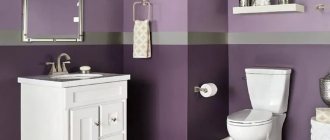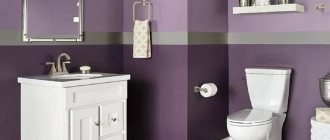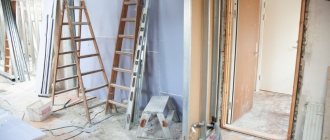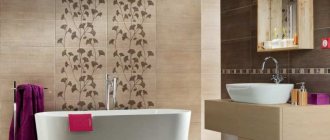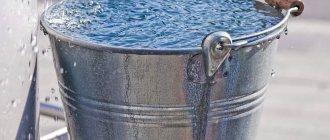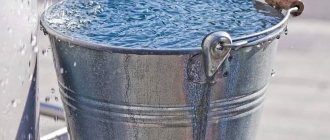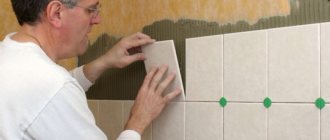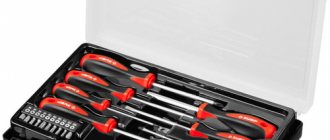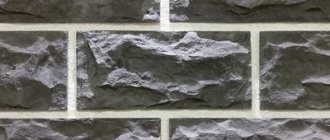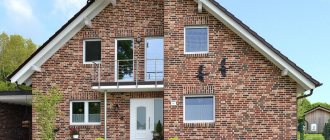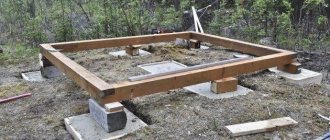37264 0 29
Mullvatt August 26, 2016Specialization: Capital construction work (laying a foundation, erecting walls, constructing a roof, etc.). Internal construction work (laying internal communications, rough and fine finishing). Hobbies: mobile communications, high technology, computer equipment, programming.
Tile is not the only way to decorate a bathroom.
Recently, a friend of mine asked me to recommend some finishing materials for her bathroom other than tiles. She's tired of the tiles, and she doesn't want to follow the general trend. I then offered her a choice of several types of finishes, which, due to their performance properties, are excellent for use in humid air.
I think that for all novice craftsmen who do their own repairs, such selection instructions will not be superfluous.
Decorative plaster
In order for decorative plaster to be used in the bathroom, manufacturers add synthetic components to it, which make it impervious to moisture.
- Silicate plaster is the strongest, fireproof, moisture resistant, and has antiseptic properties. With proper use it can last up to 60 years.
- Mineral plaster has excellent vapor permeability, which means that the material absorbs excess moisture and steam, and releases moisture back in dry air. Ideal for bathrooms. In this case, the service life of the coating reaches 30 years.
- Acrylic plaster is not afraid of moisture, can withstand wet cleaning and lasts up to 50 years. It is also quite easy to apply.
The advantages of decorative plaster: vapor permeability, moisture resistance, easy maintenance, dust does not settle on it, a wide choice of textures.
Cons: high price and high consumption, limited color palette, application requires professional skills.
Project author: Oksana Araslanova
Project author: Oksana Araslanova
Project author: Evgeny Shvetsov
Project author: Evgeny Shvetsov
Project author: Kristina Izotova
Project author: Kristina Izotova
Requirements for finishing materials for the bathroom
It is better to choose finishing materials for the bathroom and the entire apartment that will be easy to install. This is true even if the premises are renovated by hired workers. If the tiles or panels in the bathroom are damaged, it will be better if the homeowner himself can fix them without resorting to expensive repairs. Materials used for the bathroom must be moisture-resistant and antiseptic. The air in the bathroom is saturated with a huge amount of water vapor, which can gradually destroy the finish. Fungus can easily form in bathrooms due to dampness and poor ventilation. To avoid this, you should buy special antiseptic materials. When taking a hot shower or bath, the energy of the water is automatically transferred to the air, causing it to become very hot and have a destructive effect on the lining. Also, the materials should be different:
- ease of maintenance and operation;
- environmental friendliness;
- chemical resistance;
- high strength, etc.
Mosaic
Along with ceramic tiles, mosaic is one of the popular types of finishing for bathrooms, showers, and swimming pools. Different materials are used in production: glass, sea pebbles, metal. Most manufacturers produce mosaics in separate elements on a plastic base, which simplifies installation.
Advantages of mosaic: stylish appearance, moisture resistance, easy installation, resistance to household chemicals, durability.
Cons: high cost, difficulty of maintenance depends on the material from which the mosaic is made.
Project author: Elena Dyakova
Project author: Elena Dyakova
Project author: Ivan Kachalov
Project author: Ivan Kachalov
The bathroom is decorated with Trend mosaics. Project author: Alexey Razorenov
The bathroom is decorated with Trend mosaics. Project author: Alexey Razorenov
Types of wall decoration
In addition to tiles, the following materials have these characteristics:
- waterproof paint;
- plastic panels or siding;
- self-adhesive film;
- linoleum;
- oilcloth;
- mosaic;
- moisture-resistant drywall;
- lining made of wood, plastic or MDF;
- porcelain stoneware;
- glass blocks;
- plaster.
Decorative plaster
Porcelain tiles
Plastic panels
Mosaic
Installation of a wall made of hollow glass blocks
Painting the walls in the bathroom
Self-adhesive film
https://youtu.be/Mj5tGz5t5xk
A natural stone
The use of natural marble, onyx, and granite in the bathroom interior allows you to achieve a special atmosphere of luxury and turns an ordinary utility room into a real spa. The pattern and color palette of natural stone is never repeated, so you can be sure of the uniqueness and exclusivity of the interior. In wet rooms, you can use any type of marble, onyx, travertine, as well as granite and quartzite.
The surfaces are decorated with amazonite (walls and part of the floor), marble (leaves on the floor) and mirrors. Project authors: Pavel Mironov, Anna Kulikova
The surfaces are decorated with amazonite (walls and part of the floor), marble (leaves on the floor) and mirrors. Project authors: Pavel Mironov, Anna Kulikova
- Marble has a noble appearance, high strength and durability. The material is quite resistant to temperature changes and temperature surges. But at the same time, it does not withstand contact with aggressive detergents. Also, sometimes the structure of the stone contains iron components, which during use can give a rusty tint. The cost of marble slabs is also steep. The price of natural materials is influenced by many factors: including processing, cutting, and the cost of delivering raw materials to production.
The floor and walls of the bathroom in the master bedroom are decorated with natural marble with an active large pattern. Project author: Tatyana Boronina
The floor and walls of the bathroom in the master bedroom are decorated with natural marble with an active large pattern. Project author: Tatyana Boronina
- Onyx is a semi-precious stone that looks especially impressive when used in interiors as accents. It is valued for its intricate patterns and interesting color transitions on the slab. This is a durable material that is resistant to temperature changes. But like other natural stones, onyx walls are not recommended to be washed with alkaline products or containing abrasive particles.
The walls are lined with onyx with white veins. Project author: Yuri Zimenko
The walls are lined with onyx with white veins. Project author: Yuri Zimenko
- Today travertine is mined in Germany, Italy and Turkey. This stone has a pleasant beige creamy tint and, after polishing, acquires a silky, pleasant-to-touch surface - finishing with travertine gives the room a special coziness and intimate atmosphere. Unlike other types of stones, travertine conducts heat, which means it is not cold to the touch. The porous surface ensures no slipping.
- Granite is actively used in the decoration of bathrooms, thanks to its rich color palette - from light to dark shades and inclusions. Granite slabs are easy to install, which is also a plus.
- Quartzite is a stronger and more durable material than granite. It is difficult to scratch, so walls decorated with this stone can be easily washed even with a brush. The only drawback is the small selection of quartzite types on the Russian market and the high cost in connection with this.
Advantages of natural stone: luxurious appearance, moisture resistance, strength, durability, environmental friendliness.
Cons: high cost and complexity of installation.
Project authors: Maria Makhonina, Alexandra Kazakovtseva
Project authors: Maria Makhonina, Alexandra Kazakovtseva
The walls and floor are decorated with marble. Project authors: Elena Lukinskaya, Elena Sazonova, Anna Novikova
The walls and floor are decorated with marble. Project authors: Elena Lukinskaya, Elena Sazonova, Anna Novikova
Epidaurus Brown marble of burgundy brown color is used on the walls. Project author: Sergey Fedotov
Epidaurus Brown marble of burgundy brown color is used on the walls. Project author: Sergey Fedotov
Project author: Oksana Simonova
Project author: Oksana Simonova
The walls and built-in furniture are made of natural stone, the floor is made of bleached oak. Project author: Olga Freiman
The walls and built-in furniture are made of natural stone, the floor is made of bleached oak. Project author: Olga Freiman
How to finish the floor
For finishing the floor, a good alternative to tiles in the bathroom are porcelain stoneware, linoleum and special enamel, which is applied over a concrete coating.
Self-leveling enamel
Such floors are called seamless. They do it like this:
- First, the base is repaired.
- Then a non-woven material with a printed image is laid on it.
- Then they are coated with a special polymer composition, which includes epoxy or polyurethane resins. This is a transparent mixture, the applied image is visible underneath it. The composition polymerizes, forms a durable and wear-resistant coating that is insensitive to moisture.
The only drawback of the material is that the floor is cold and needs additional heating.
In the first few days, the surface emits an intense odor, so you need to devote some time to airing.
Vinyl laminate
For the flooring in the bathroom, a moisture- or water-resistant laminate is used. The first is made from a wood-chip base, impregnated with wax and treated with antibacterial additives. It tolerates high air humidity provided there is good ventilation and minimal contact with water.
Waterproof laminate is a good solution for those who want to give up cold tiled floors.
Waterproof laminate is considered more durable. It has water-repellent properties. If liquid hits the surface, it is absorbed and does not destroy the top layer.
Separately, vinyl laminate is distinguished. It is made using a different technology based on a composite mass. The similarity with the standard material is expressed in the locking connections, which are located at the ends.
PVC panels
They differ from panels for wall decoration. More often these are vinyl sheets, sometimes in the form of individual tiles, which are mounted with special glue, less often - in the form of rolls. Quartz-vinyl tiles also fall into this category. Quartz filler improves the performance characteristics of the material.
Concrete covering
The technology is reminiscent of polymer self-leveling floors. However, a pattern is not applied to the concrete base; it is simply filled with epoxy resin. Such floors look good in a loft-style interior, as they fit into the industrial concept.
There are different finishing options. Concrete floors can be smooth and polished or textured and slightly rough. For safety, it is better to choose the latter option, since the risk of slipping is eliminated.
Tree
You can use wood in bathroom decoration, but only moisture-resistant species: for example, teak, larch, beech, cedar. Solid wood, wooden lining or veneered boards are suitable for wall decoration. In any case, the surface must be sanded and coated with an antiseptic composition and varnish to avoid rotting and damage by fungus and mold. In addition to varnish, oil or tinting, as well as paint, can be used in damp rooms.
The walls in the bathroom were covered with Biofa paint in a deep blue shade and treated with a special oil for wet rooms, and moisture-resistant teak wood was laid on the floor. Project author: Anna Lazareva
The walls in the bathroom were covered with Biofa paint in a deep blue shade and treated with a special oil for wet rooms, and moisture-resistant teak wood was laid on the floor. Project author: Anna Lazareva
Wood plumes: beautiful texture and natural color of wood, warm and soft material, environmentally friendly
Cons: requires special care, limited color palette (if not painted), high cost of noble wood.
The decor of the children's bathroom combines golden-hued marble and walnut wall panels. Project authors: Konstantin Novikov, Daria Egorova, Alexander Krivonosov
The decor of the children's bathroom combines golden-hued marble and walnut wall panels. Project authors: Konstantin Novikov, Daria Egorova, Alexander Krivonosov
Project authors: Maria Bakhareva, Nikita Bakharev
Project authors: Maria Bakhareva, Nikita Bakharev
Project author: Oleg Klodt
Project author: Oleg Klodt
Comparison and selection of the best option
It is difficult to compare materials with different characteristics. But when choosing, you can consider the following points:
- If the main criterion is the low cost of the material, then plastic panels, acrylic paint or mineral plaster are the best choice for walls. You can put linoleum on the floor. Moreover, the materials will look good due to the variety of patterns and textures. They are also water resistant.
- When durability is important to the owner, natural stone is a good choice for wall coverings, and vinyl and laminate for floor coverings. However, such materials are quite expensive.
- If the aesthetic factor plays an important role, then you should choose natural stone or mosaic tiles for the wall, and self-leveling enamel for the floor.
Wallpaper and natural wood look beautiful in the interior, but they are not resistant enough to high humidity and require labor-intensive care. You should take into account the repairability of the coating and the ability to restore it yourself, without turning to specialists.
Wallpaper
If in the toilet no one is surprised by wallpaper, then in the bathroom this type of covering still raises questions. Although there is no reason to cross wallpaper off the list of bathroom decorations. In order not to encounter negative consequences, when choosing wallpaper you need to pay attention to its appearance.
vinyl wallpaper for bathrooms - they will not swell from moisture and will withstand light cleaning. The density of the coating allows you to hide small irregularities, which is also a definite plus. Wallpapering is not difficult, so the repair can be done without a professional.
The advantages of vinyl wallpaper: a large selection of textures and patterns, a rich color palette, moisture resistance, ease of installation and dismantling, cost savings compared to designer tiles and natural stone and wood.
Cons: moisture-resistant wallpaper with designer prints can be much more expensive than regular vinyl wallpaper.
Project author: Maria Bakhareva
Project author: Maria Bakhareva
Among the wallpapers there is also liquid wallpaper , which in its application method is more similar to decorative plaster. They allow moisture and steam to pass through, making them ideal for bathrooms, plus they provide additional heat and sound insulation.
Another material is glass wallpaper , they are made of glass threads and can allow air to pass through without absorbing moisture. Fiberglass wallpaper can withstand cleaning with detergents, it is durable and can be painted - this means that the color palette of the finish tends to infinity.
Project authors: Elena Tokmacheva, Katie Ryzhova, Peteris Lauchka-Lovchko, Peter Pospelov
Project authors: Elena Tokmacheva, Katie Ryzhova, Peteris Lauchka-Lovchko, Peter Pospelov
Ergonomics: proper organization of space in the bathroom
The bathrooms are too small to speak of their successful ergonomics. Ideally, there should be at least 75 cm between the plumbing equipment, the door and the walls. The only exceptions are the toilet and bidet, for them this value can be equal to 35 cm. The distance between the bathtub (shower stall) and the sink can be reduced to 30 cm. Height washbasins and countertops of bathroom furniture can vary from 80 to 110 cm. Usually this value is 90 cm, however, today many people install special sinks for small children at a height that is comfortable for them. Moreover, there should be a distance of at least 10 cm between these washbasins. The layout of the bathroom should be convenient for all family members. This applies to both children and the elderly. Moreover, you need to try to save space. In small bathrooms (for example, in Khrushchev-era buildings), the washing machine is placed under the sink, and instead of a bathtub, a shower is installed.
Plastic panels
This option is suitable if you are wondering how to decorate a bathroom other than tiles cheaply. PVC panels , of course, do not have a luxurious appearance, but they have excellent performance characteristics: they can be washed using household chemicals, they do not swell from moisture and are not afraid of fungus and mold. In addition, even uneven walls can be sheathed with plastic - and this will save the budget for repairs if necessary.
The advantages of PVC panels: low cost, easy maintenance, do not absorb odors and moisture, you can hide pipes under the panels and add additional thermal insulation, which is important for country houses and country houses.
Disadvantages: it cannot be called an environmentally friendly finish, they “eat up” centimeters of space, they look very simple.
Linoleum
You can use linoleum to cover the wall in the bathroom. There should be no old tiles or other materials between the wall and the covering, for which you should level the wall, putty the grooves, and then glue the linoleum. You can glue linoleum with your own hands. Linoleum allows you to avoid joints between tiles, where bacteria multiply in a wet environment. Linoleum is a wear-resistant material with a service life of more than 10 years. In addition to regular linoleum, there is special linoleum for walls; it is plastic, durable and moisture-resistant, has different textures or patterns and does not provide joints between materials. In addition, such repairs are easy to do yourself.
Porcelain tiles
Porcelain tiles are a high-quality, durable material for the bathroom. For a wall in a small bathroom, you can choose between matte and glazed porcelain tiles. Porcelain tiles have the following advantages:
- wear-resistant;
- durable;
- non-conductive;
- moisture resistant;
- hygienic;
- not subject to fading;
- frost-resistant.
Porcelain tiles are stronger than tiles due to the less porosity of the material, but porcelain tiles are not as rich in colors and patterns as tiles. You can hide grooves for wiring or grooves for communications under porcelain stoneware. Due to its weight, porcelain stoneware is not very suitable for finishing, especially if the structure is to be covered with gypsum fiber board, which can be covered with it.
Glass blocks
Glass blocks for bathroom partitions have become popular now, so they are gaining momentum again. This material looks new and fresh against the background of tiles and allows you to add an urban note to the interior. Glass blocks can be used for decoration or used to make a partition or shower room of the required size. What are the advantages of glass blocks:
- ceramic tiles combine well with glass blocks;
- ease of care;
- hygiene;
- light transmittance.
The disadvantage of glass blocks is their susceptibility to scratches. To fasten glass blocks together, you can use cement glue or special modular systems, which allow you to make walls from glass blocks very quickly with your own hands.
